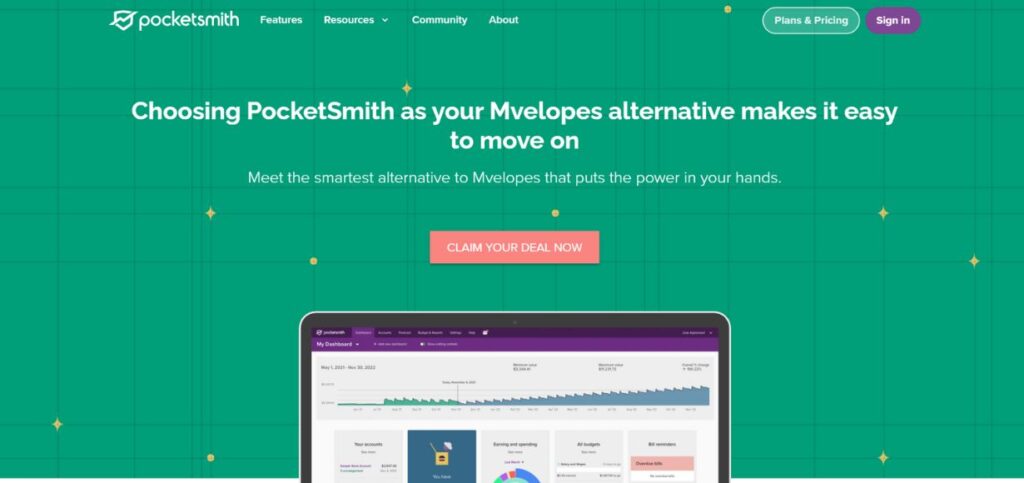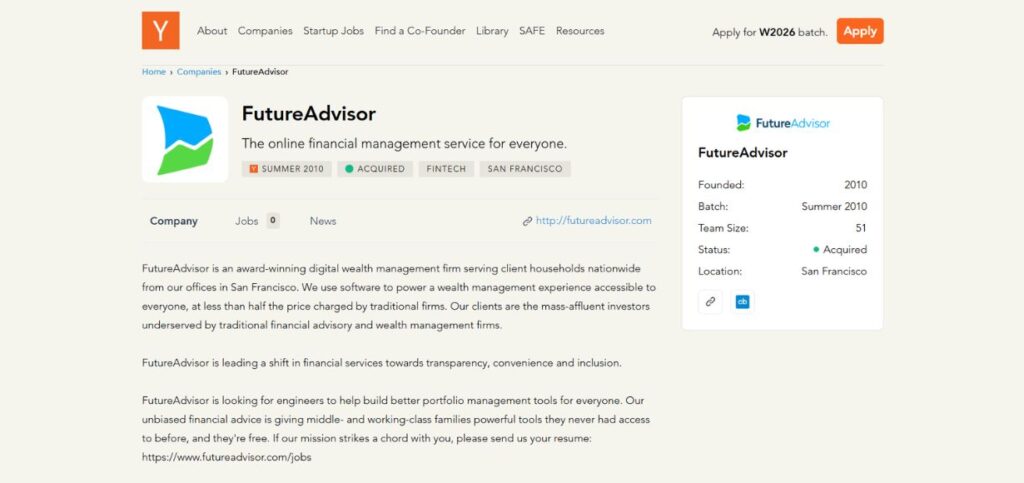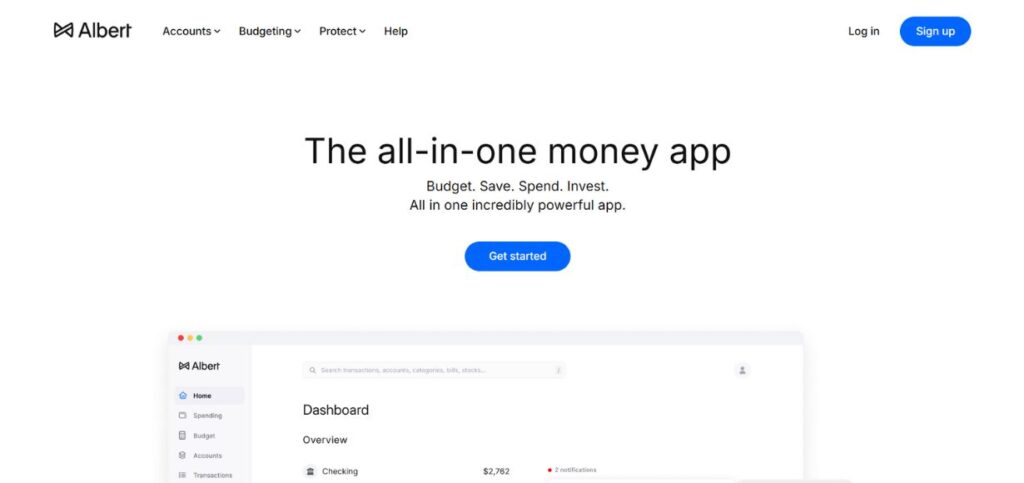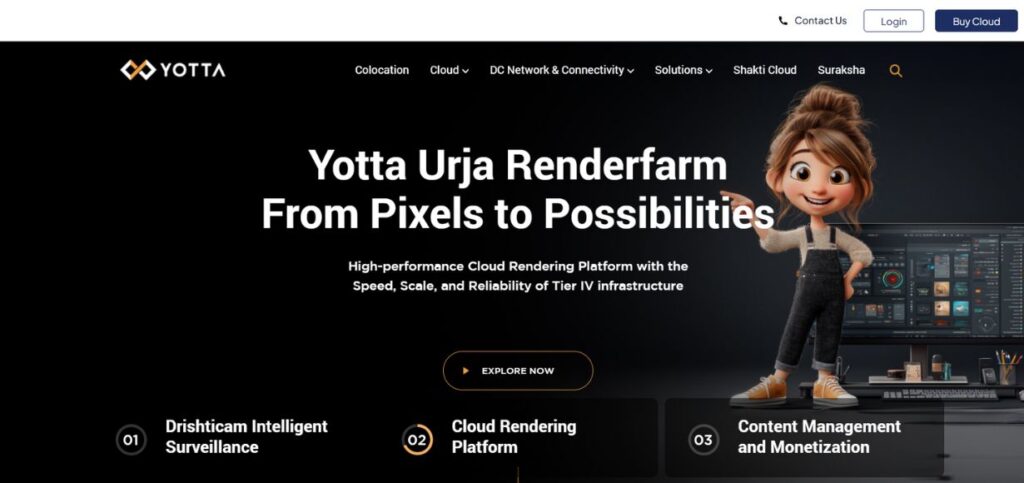The digital era has complicated the process of managing personal finances with various sources of income, a wide range of investment opportunities, and an unusual number of different areas to spend money on. The current consumer is under more financial strain than ever, with the ever-increasing inflation and the fluctuating market conditions, and thus it is even more important than ever that the modern consumer manages their money well.
It is here that the financial management tools are implemented, as electronic companions that make the complex budgeting, investing, and financial planning process easier. Technology has been able to evolve, and we no longer use pen and paper to handle personal finance; instead, we have advanced high-tech platforms that can provide real-time information and automated answers.
To a recent graduate trying to cope with student loans, to a young professional trying to create an emergency fund, or an experienced investor trying to maximise his portfolio performance, the appropriate financial management tools can be a big difference in financial success. These platforms are available with features that suit a wide range of financial objectives and goals, including the simplest, expense tracking, and the most sophisticated ones, including wealth management.
What are Financial Management Tools?
Financial management tools refer to online applications and software for managing and organising finances and optimising the financial operations of individuals and businesses. These all-inclusive solutions are a blend of conventional budgeting practices and contemporary technology, enabling the user to have real-time information on the financial performance and status.
These tools are a combination of several purposes at their base level: expense tracking, budget creation, investment monitoring, debt management, and financial goal setting. They combine with different financial institutions and automatically classify transactions and present sophisticated analytics on spending trends and financial behaviours.
Essential Features to Look for in Financial Management Tools
The ability to pick an ideal financial solution is one important ability that demands keeping in good account the main differences that distinguish great features from ordinary ones.
- Automation: It has an elaborate automation system that is capable of fast and easy management of finances by automatically classifying transactions, paying bills, and periodically making savings transfers without requiring any action from the customer.
- Security: They use advanced encryption methods, two-factor authentication, and effective fraud prevention to ensure that users can manage sensitive information without a second thought.
- Integration: Tie-up to various financial institutions, credit cards, investment accounts, and other third-party services forms a whole financial ecosystem that offers a complete picture of all the monetary activities.
- Personalisation: One informs the individual of the personalisation of the platform according to individual financial needs and notifications’ settings to personalise the platform according to preference.
- Analytics: Dynamic data analytics allow users to analyse behaviour in relation to money to learn how to improve financial behaviour and make informed decisions about their money management, regardless of what knowledge is available.
Comparison Table for Financial Management Tools
| Tool Name | Rating | Best Feature |
| Personal Capital (Empower) | 4.8/5 | Advanced investment tracking and net worth analysis |
| Mint | 4.5/5 | Free comprehensive budgeting with credit score monitoring |
| EveryDollar | 4.6/5 | Zero-based budgeting with step-by-step guidance |
| Mvelopes | 4.2/5 | Digital envelope budgeting system |
| PocketGuard | 4.3/5 | “In My Pocket” spending tracker |
| GoodBudget | 4.4/5 | Collaborative envelope budgeting for families |
| Moneydance | 4.1/5 | Privacy-focused with cryptocurrency support |
| Money Dashboard | 4.0/5 | Comprehensive account aggregation |
| FutureAdvisor | 4.3/5 | Automated investment portfolio management |
| Albert | 4.2/5 | Cash advance and automated savings |
| Yotta | 3.9/5 | Gamified savings with lottery-style rewards |
Top 11 Financial Management Tools
1. Personal Capital (Empower)

Rating: 4.8/5
Website: https://www.empower.com/
Best Use Cases: Comprehensive investment tracking and wealth management planning
Personal Capital (Empower brand) is one of the most advanced financial management systems offered to investors and high-net-worth individuals. The site is outstanding in the analysis of portfolios, retirement planning, and tracking investment fees. It has a sophisticated dashboard that consolidates all financial accounts, providing the user with a complete picture of the net worth and investments. The tool is also strong because of its investment analytics capabilities that are of a professional level, which is why the tool is suited to people who do not focus on budgeting but on building wealth in the long term and optimising their portfolio.
Key Features:
- Net worth tracking
- Investment fee analyser
- Retirement planning tools
- Portfolio rebalancing recommendations
- Advanced security protocols
Pros:
- Professional investment insights
- Comprehensive financial overview
- Free advanced tools
Cons:
- Limited budgeting features
- Overwhelming for beginners
- Investment-focused primarily
Pricing: Free version available
Also read: Top AI Tools for Financial Research
2. Mint

Rating: 4.5/5
Website: https://mint.intuit.com/
Best Use Cases: Comprehensive budgeting and expense tracking for everyday users
Mint is still among the most popular financial management tools because it is provided free of charge, and its interface is easy to use. Intuit created this platform, giving users strong budgeting options, bill monitoring, credit score monitoring, and a no-fee fee. The app will automatically classify the transactions, warn about suspicious spending, and give a detailed report of spending. The aspect that makes all the difference is that it has an executive level of financial management that can be available to any individual without having any reference to their financial knowledge or experience. The platform can be integrated with many financial institutions so that it can give real-time updates of the account and proper tracking of finances.
Key Features:
- Automated expense classification
- Payment due date alerts
- Credit rating surveillance
- Financial target establishment
- Portfolio performance monitoring
Pros:
- Entirely no-cost service
- All-inclusive functionality suite
- Intuitive design experience
Cons:
- Ad-revenue supported structure
- Basic investment capabilities
- Intermittent synchronisation problems
Pricing: Free version available
3. EveryDollar

Rating: 4.6/5
Website: https://www.ramseysolutions.com/money/everydollar
Best Use Cases: Zero-based budgeting methodology with step-by-step financial guidance
EveryDollar, which was co-founded by their financial titan Dave Ramsey, specialises in zero-based budgeting, whereby every penny earned has to be assigned a role. This tool of financial management guides one in maintaining disciplined spending and gaining peace of mind financially. The program is so laid out that clocking through a budget might be convenient for first-time budgeters or even for those who are somewhat disoriented in their financial lives. The beauty behind the application is the simplicity and the ease of giving out the right financial values and imparting the correct practice.
Key Features:
- Start-from-scratch budget methodology
- Personalised spending classifications
- Payment deadline notifications
- Financial goal progress monitoring
- Learning materials and guides
Pros:
- Straightforward budget management
- Built-in educational materials
- Emphasis on debt elimination
Cons:
- Requires manual input
- Minimal investment options
- Elementary analytics tools
Pricing: Free version available
4. Mvelopes

Rating: 4.2/5
Website: https://www.pocketsmith.com/mvelopes-alternative/
Best Use Cases: Digital envelope budgeting system for disciplined spending control
Mvelopes is one of the best behavioural financial management tools today. That is because their virtual platform is a modernised version of the old envelope budgeting system. The system invests in virtual envelopes that correspond to the different expenditure categories, limiting overspend in one category. This system serves very well for individuals struggling with overspending and also for those who want to develop better spending habits. It is a holistic solution capable of meeting the requirements of all users willing to become financially disciplined and attain certain monetary objectives, since it has debt reduction coaching and personal finance education resources.
Key Features:
- Virtual envelope budget method
- Debt elimination strategies
- Individual financial mentoring
- Instant expense notifications
- Learning materials and tutorials
Pros:
- Strong expense management control
- Emphasis on debt payoff
- One-on-one coaching services
Cons:
- Restricted portfolio monitoring
- Expensive subscription plans
- Steep initial learning process
Pricing: Plan starts from $6/ month
- Premier: $9.95/month
- Plus: $19/month
Must Read About: Top HR Management Software
5. PocketGuard

Rating: 4.3/5
Website: https://pocketguard.com/
Best Use Cases: Simple spending tracking with “pocket money” calculation
PocketGuard makes managing finances as simple as just answering one big question: How much can I spend without stinginess? It also makes it one of the easiest tools of financial management for people looking for simple spending advice without all the complicated tools. In My Pocket is its flagship product, which will calculate how much cash can go into this spending allowance by considering the individual’s personal financial goals, bills, and necessary expenditures.
This instant access to available cash acts as both a psychological deterrent to really huge expenditures and encouragement for financial mindfulness. Its most popular function is ease and simplicity for those users who prefer quite simple, uncomplicated financial management software.
Key Features:
- “In My Pocket” computation tool
- Recurring service monitoring
- Payment due date alerts
- Expense classification system
- Graphical expenditure summaries
Pros:
- Streamlined user interface
- Transparent financial direction
- Recurring payment oversight capability
Cons:
- A few sophisticated tools
- Elementary portfolio tracking
- Restricted personalisation choices
Pricing: Free version available
6. GoodBudget

Rating: 4.4/5
Website: https://goodbudget.com/
Best Use Cases: Collaborative envelope budgeting for families and couples
GoodBudget is a modernisation of the envelope system of budgeting and focuses on collaboration and family finance management. This makes it the best of the financial management tools among households sharing common costs. The platform enables several users to update and view budgets in real time, which encourages openness and responsibility when making decisions on family finances.
The users can arrange big spending, pay off debt, and provide detailed reports that examine the usage patterns. The power of the application lies in its collaborative functions and a powerful adoption of proven budgeting techniques, which have assisted families in managing money over the ages.
Key Features:
- Collaborative budget sharing
- Envelope budgeting system
- Debt payoff tracking
- Expense planning tools
- Detailed spending reports
Pros:
- Family collaboration features
- Proven budgeting method
- Comprehensive reporting capabilities
Cons:
- Limited investment tracking
- Manual transaction entry
- Basic automation features
Pricing: Free version available
Don’t Miss: Top Workflow Management Platforms
7. Moneydance

Rating: 4.1/5
Website: https://moneydance.com/
Best Use Cases: Privacy-focused financial management with cryptocurrency support
Moneydance also values the privacy of the user and the security of data and provides a wide range of financial management features, unlike other financial management software that focuses on data safety. The entire financial information is stored on users ‘ devices, instead of on cloud servers, as the platform would have ensured utmost privacy and security. It accepts various currencies, including cryptocurrencies, which is beneficial to users in other nations or investors in cryptocurrencies. The application gives comprehensive reporting, investment monitoring, and bill management with in-depth user control over sensitive financial information. It is also strong because it integrates strong financial features and ruthless privacy protection.
Key Features:
- Local data storage
- Cryptocurrency support
- Multi-currency capabilities
- Advanced reporting tools
- Investment portfolio tracking
Pros:
- Maximum privacy protection
- Cryptocurrency integration
- Comprehensive feature set
Cons:
- Higher upfront cost
- Steeper learning curve
- Limited cloud features
Pricing: Free trial available
8. Money Dashboard

Rating: 4.0/5
Website: https://www.moneydashboard.com/
Best Use Cases: Comprehensive account aggregation and spending analysis
Money Dashboard is a market leader in personal finance aggregation in the UK market, and has developed to become a full platform of financial management tools for users around the world. The application is superior in linking various financial accounts and giving a single spending analysis over all linked institutions. Offline accounts can be created by users of the institutions that are not directly integrated to provide full financial visibility.
The pay cycle mechanism in the platform allows users to plan their expenditures in between paydays, which is very helpful, especially when there are irregularities in the schedules of their income. It is also strong because it is a highly detailed aggregation of accounts, and easy to categorise spending.
Key Features:
- Multi-account aggregation
- Spending history tracking
- Pay cycle budgeting
- Offline account creation
- Automated notifications
Pros:
- Comprehensive account integration
- Pay cycle budgeting
- Free platform access
Cons:
- Limited investment features
- Basic goal-setting tools
- Regional availability restrictions
Pricing: Free version available
9. FutureAdvisor

Rating: 4.3/5
Website: https://www.ycombinator.com/companies/futureadvisor
Best Use Cases: Automated investment management and portfolio optimisation
FutureAdvisor is a robo-advisor platform, which is an automated management of investment portfolios based on modern portfolio theory, and as such constitutes a niche option among financial management technologies for hands-off investors. The platform creates diversified portfolios depending on the age, risk tolerance, and investment timeline of users, following which it constantly monitors and rebalances such investments to ensure optimal performance.
It offers several types of accounts, such as traditional IRA, Roth IRA, and taxable investment accounts. The power of the application is that it offers the services of an investment manager of a profession at a fraction of the cost of traditional services, and advanced investment strategies are open to common investors.
Key Features:
- Automated portfolio management
- Rebalancing recommendations
- Tax-loss harvesting
- Retirement account management
- Diversification optimization
Pros:
- Professional investment management
- Low management fees
- Automated rebalancing
Cons:
- Investment-focused only
- Limited budgeting features
- Minimum balance requirements
Pricing: Custom pricing
10. Albert

Rating: 4.2/5
Website: https://albert.com/
Best Use Cases: Automated savings with cash advance and financial coaching
Albert integrates automated savings, cash advances, and financial coaching into one platform of financial management tools that will serve users who are interested in financial aid in the short term and long-term wealth creation. The app evaluates the income and expenditure patterns of the user and automatically transfers the relevant sums to their accounts, and allows them to access their earned salaries before their payday.
Such a combination of services is unique to meet short-term and long-term cash flow issues and long-term saving objectives. The site also has the services of human financial advisors, so professional advice can be available to the users irrespective of the account balance or level of investment.
Key Features:
- Automated savings system
- Cash advance services
- Human financial advisors
- Spending analysis tools
- Rewards for savings
Pros:
- Automated savings feature
- Cash advance availability
- Human advisor access
Cons:
- Monthly subscription required
- Limited budgeting tools
- Cash advance fees
Pricing: Free trial available
11. Yotta

Rating: 3.9/5
Website: https://yotta.com/
Best Use Cases: Gamified savings with lottery-style rewards and incentives
The motivation of saving is made more revolutionary by Yotta, which introduces the aspect of lottery-style games as part of the traditional savings account, which is quite uncommon among the software platforms of financial management tools. The saving of money is also interesting and can be rewarding as users get tickets in weekly drawings, prizes of up to $10 million, depending on their account holdings.
The platform offers favourable interest rates and also makes it fun with its gaming features. This new approach is especially attractive to those users who do not find traditional savings motivation, nor people who love gamified experiences. The power of the application is that it will make the savings process fun and will generate valid financial gains.
Key Features:
- Prize-based incentive program
- Regular contest drawings
- Attractive yield rates
- Unrestricted monthly transactions
- Game-style saving approach
Pros:
- Motivating savings encouragement
- Substantial reward opportunities
- No-cost platform usage
Cons:
- Basic money management tools
- Casino-style reward structure
- Scarce budget planning options
Pricing: Free version available
How to Choose the Right Financial Management Tools
There’s a right platform that fits your financial needs, but choosing it is a little bit tough because you have to consider so many aspects as per your conditions, goals, and preferences aligned well with them, which are to manage money well.
- Budget: Estimate not just your current financial ability to pay the subscription fee, but also the value that the tools are likely to realise in the long run in terms of better financial management, debt reduction, and optimum investment returns.
- Features: Look into what certain capabilities would help you the most, such as simple budgeting, a true measure of investment tracking, debt management, joint family planning, or the management of many accounts.
- Integration: Look into how well those available platforms are integrated with your own existing financial institutions, credit cards, investment accounts, and other services used frequently to do business in your financial life.
- Usability: Your level of comfort and preference for simplicity or complexity in using the technology must be considered, for some online tools have very simple interfaces, while others could provide a range of features that might require a great deal of learning investment.
- Purpose: The platform is to be selected according to the major financial plan with which it should be used: to get rid of debt, save an emergency fund, grow investments, plan for retirement, or manage wealth overall.
Conclusion
The financial management technology world moves at a fast pace and provides more advanced solutions to people and families willing to have more efficient control over their finances. Ranging between simple budgeting programs and the full wealth management platforms, current tools have more than ever before offered professional-level financial applications that were formerly the possession of only high-net-worth individuals.
With the ongoing technological progress, such financial management tools are expected to become smarter, provide predictive features, auto-optimisation, and recommendations tailored to the prevailing financial conditions. Artificial intelligence and machine learning will further increase the process of democratizing access to advanced financial strategies.
Frequently Asked Questions
Q: Are the financial management tools secure to be used?
A: The majority of well-known services employ bank-level encryption and security, which is reasonably safe, provided that you pick the providers with good security systems.
Q: Is it necessary to spend money on financial management tools?
A: There is a large number of good free alternatives, but pay-based ones usually have more features, better customer service, and other features.
Q: Will financial management tools displace financial advisors?
A: Those should be used as an addition and not an alternative to human advisors when it comes to situations involving complex financial planning that could need personal advice and expertise.
Q: What is the frequency with which my financial management tool should be checked?
A: Budget monitoring can be performed every week, but it can also be performed daily to create more financial awareness and habits.
Q: What tool is easiest for beginners to use?
A: It is a good start with Mint, EveryDollar, or Pocket Guard with their convenient interfaces and detailed education of new users.






